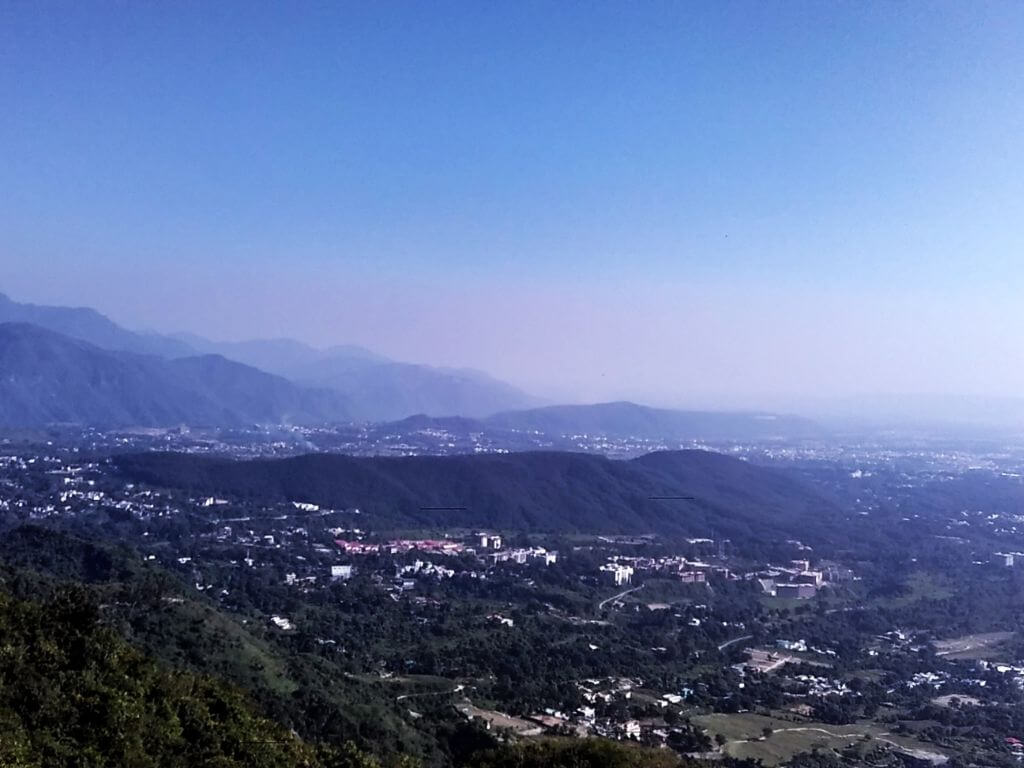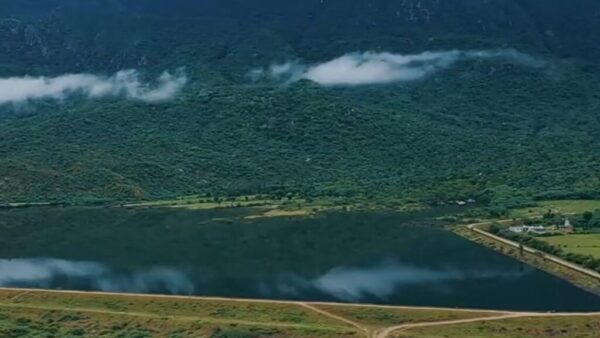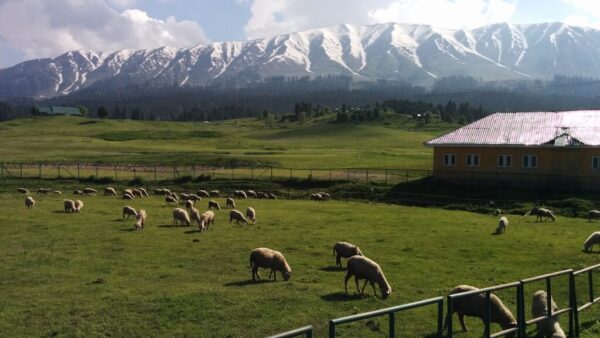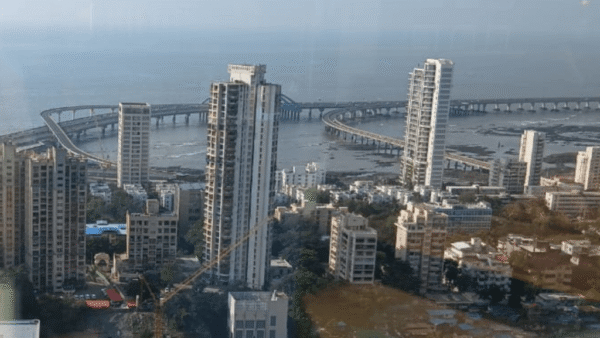A couple of years ago, I noticed that the all-year stream, locally known as Narotta Nadi, which flowed across the Irish bridge on the way to our home was blocked. I attempted to make an official complaint which led to a gathering of worthy people in the city, Dehradun, in the area. From the Supreme Court’s monitoring committee to the Nagar Nigam, the state forest department, the local development authority and local panchayats, everyone agreed that the blockage was wrong and several laws had been broken.
The developer responsible was roundly castigated and he looked downcast. He claimed that he had destroyed the hillside for a proposed war memorial. It was agreed that the devastation was excessive. The panchayats threatened hunger strikes if the river was not freed. But nothing happened. Or was it business as usual? Because, as it turned out, this developer blamed another one. And, soon, on that very spot, a massive township was announced which spun the length and breadth of the ridge. The river remained blocked for two years, until this monsoon. The flourishing tanker business in the city which used the water stream increased the number of tubewells and a few more structures were constructed on the riverbed.
It was almost as if Dehradun had decided to set itself up as a prime example of how not to urbanise and develop, especially in a hilly region whose geology and ecology are unique.
In the year 2000, India’s largest and most populous state, Uttar Pradesh was bifurcated at its northern end to create the hill state of Uttaranchal (now Uttarakhand). Dehradun was made the interim capital. Gairsain, a town roughly in the middle of the new state was chosen as the capital, so that both regions of Uttarakhand, Garhwal and Kumaon, could be represented. Located in the Himalayan ranges at an altitude of approximately 1,650 metres above sea level, the people there may well argue that they dodged a bullet.
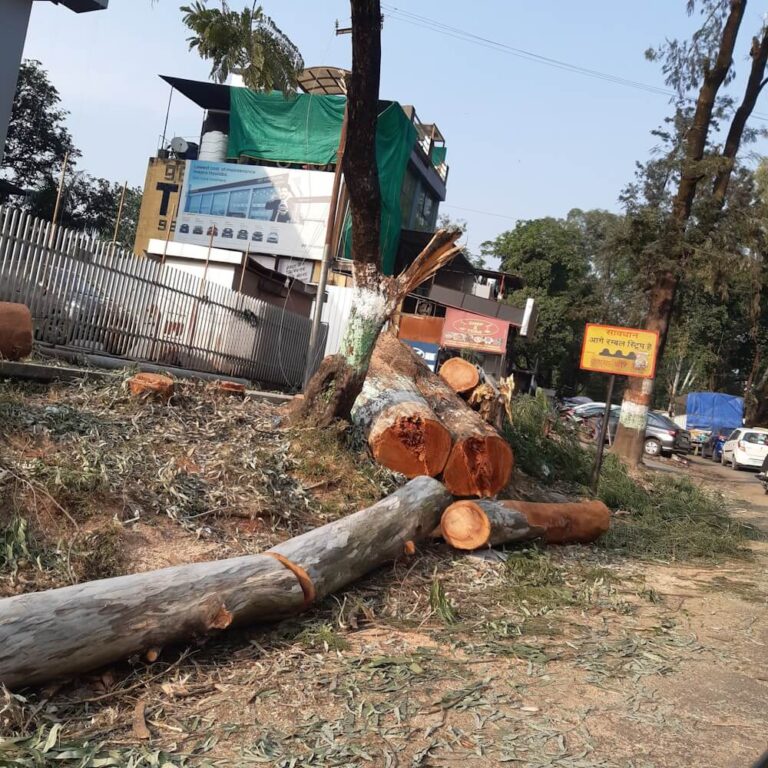
Photo: Ranjona Banerji
Two capitals, so much construction
Dehradun lies in a valley, at one end of Garhwal, nearly 260 kilometres southwest of Gairsain. In the quarter of a century since, Dehradun has transformed from a small hill station, a gateway to the Himalayas, to a bustling city with a flurry of construction along its slopes. Its population was around 5,00,000, according to the 2011 Census. It is said to have doubled since then, in just under 15 years, in the metro area. Since the pandemic, the population has reportedly risen by around five percent.
Gairsain has largely remained a dream, a lament of unfulfillment brought up around November 9 every year on Uttarakhand’s formation day. First, many geologists felt that Gairsain was too geologically unstable to be the state capital; it is also remote, located in an area not given to good connectivity. Then, given the political pressure, the state government declared in 2012 that the even smaller town of Bhararisain, some 14 kilometres from Gairsain and within that district, would be the summer capital of Uttarakhand.
As a result, the legislative assembly was constructed in Bhararisain which also meant a slew of other constructions to facilitate the government. Every summer, the government uproots itself from Dehradun and travels to Bhararisain for the season, in a manner of speaking. Subsequent governments also promised that the area between Gharsain and Bhararisain would be developed as a “smart city”. The area is sparsely populated, Gharsain being the largest town in the area with a population of 8,000.
Therefore, for all extents and purposes, Dehradun is the capital of Uttarakhand. For older residents of Dehradun, this enhanced stature is a curse. Our old town, they say, has both exploded and imploded. Its famous litchi orchards and basmati fields exist more in our memories than in reality. Constant, ill-planned or more possibly unplanned growth has led to trendy pockets of retail spaces to cater to tourists and a growing young population. These pass off as ‘development’ but there has been no substantial change in the civic infrastructure of Dehradun to cater to this rising demand.
Price of development
Dehradun is more urbanised than it ever was but this has come at an ecological cost. Research done in land use change in the city and its surroundings shows how forest cover, vegetation and fallow lands have almost vanished and been replaced by built-up areas. Between 1996 and 2019, according to an IIT Roorkee study, the built-up area in the city and its surrounding areas have increased from 26 square kilometres to 46 square kilometres. At the same time, vegetation declined from 19 square kilometres to 13 square kilometres, and fallow lands from 18 to 7 square kilometres.
Additionally, a significant change has been in the dense vegetation – the forest cover – which has reduced from 7 square kilometres to barely 4 square kilometres. I have rounded off the figures here but these sets demonstrate how drastically the city’s orientation has changed. Dehradun’s ecology is being stripped down, with or without plans, to accommodate its growth and rapid construction all over.
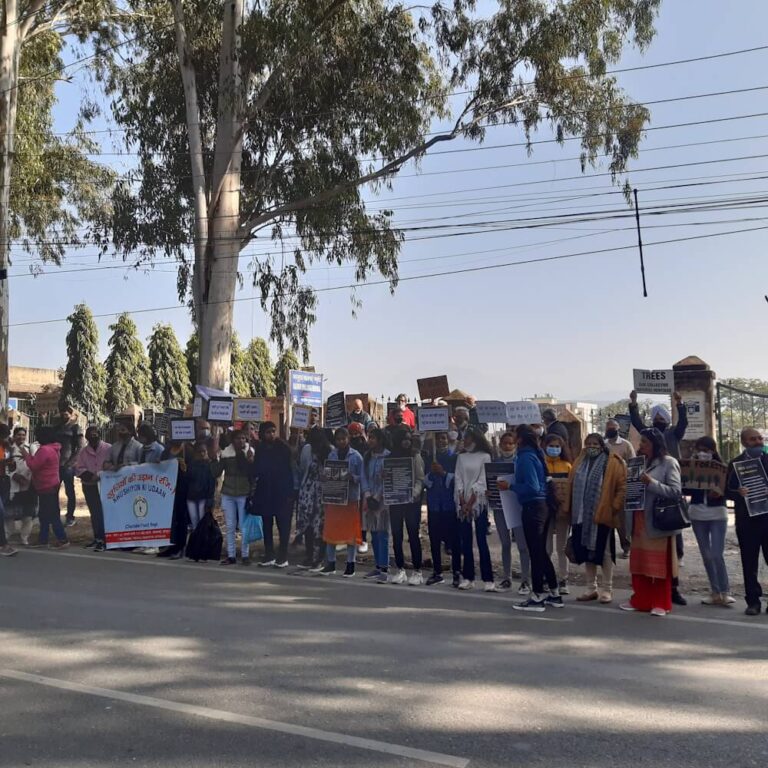
Photo: Friends of the Doon Society
The immediate effect has been the change in temperature. The average summer temperatures over the past 25 years have gone from 30 degrees Celsius range to the mid-40 or high 40 degrees Celsius. This year’s summer saw one of the worst heat waves ever in Dehradun, comparable to New Delhi’s, with highest recorded temperatures that beat all records.
Dehradun registered daytime temperatures above 40 degrees Celsius on some days which was 4-5 degrees Celsius above normal while Nainital and Mussoorie, the latter known as ‘Queen of Hills’, saw temperatures in the high 30s which is 6-7 degrees Celsius above normal. The slicing down of the green and forested areas has begun to hurt Dehradun and other towns in Uttarakhand.[1]
If the heat waves were not enough, this year’s monsoon has come with increased fury. Landslides and cloudbursts in the upper Himalayas have put the lives of locals and tourists at risk. And the more built-up areas of Dehradun have seen incessant waterlogging as a weak drainage system cannot cope with the volume of water. Since open land has been built upon and open drains are either cemented or clogged with garbage, the rainwater has nowhere to go.
What’s smart about the city?
The Narendra Modi government’s Smart Cities Mission, announced in 2015, led to great excitement in government departments in Uttarakhand which saw an opportunity for free development, if you will. Every plan that the Mussoorie Dehradun Development Authority put together attacked the most vulnerable and precious resource: forests and green cover. The plans were made with the help of external private sector consultants, of course, with little to no participation of local people and hardly any acknowledgement of the town’s ecology.
Trees were seen as obstacles in this development. It was only with the concerted efforts of citizens and citizens’ groups that large tracts of the city’s green lungs were saved and the “smartness” confined to the already developed areas. By an estimate of the local environmental groups, a staggering 40,000 trees were slated to be hacked for various projects. In 2021, a concerted citizens’ movement was launched to save nearly 11,000 trees.
The benefit of the Smart Cities Mission, whatever it was, has passed us by but, for a few years, we managed to save some green cover. Eventually, one way or another, some old tea estates were handed over to real estate developers. You lose on the roundabouts, and, then again on the swings. But this June-July saw thousands of people protest against a government proposal to cut down 240 trees to widen Canal Road and demand that the anti-green growth policies be ended. Chief minister Pushkar Singh Dhami cancelled the road-widening project.[2]
Prime Minister Modi’s pet project of Char Dham road network – a four-lane all-weather highway in the Himalayas to ease pilgrimages to four holy Hindu sites connecting Kedarnath, Badrinath, Yamunotri and Gangotri – has turned out to be an environmentally controversial one. That these roads would cut into some of the most fragile mountains was ignored and, against all advice, the project began. Since then, the devastation has been stupendous. Landslides, loss of vegetation and wildlife, loss of human lives are a constant story in the monsoon and the rest of the year when there is heavy rainfall.
Reports show that massive deforestation has happened with more than 600 acres of forest – between 25,000 and 55,000 trees – cut down, disturbing the delicate ecological balance of the Himalayan range and its ecosystem. And landslides have become more frequent; the one in Silkyara tunnel trapped 41 men for 16 days. But the Union government told the Parliament last December that the Char Dham project did not need environmental clearances.[3]
The lesson of the 2013 massive cloudburst and subsequent devastation is that no lesson has been learnt in the battle between nature and human greed. This year’s landslides at Kedarnath meant that over 10,000 people, locals and tourists, had to be rescued. The gateway town of Joshimath is already precariously perched since the glacier burst and flash floods in 2021; its land subsidence hit international headlines. And Dehradun is the entry point for most pilgrimages. But development or construction has gone on undisturbed.
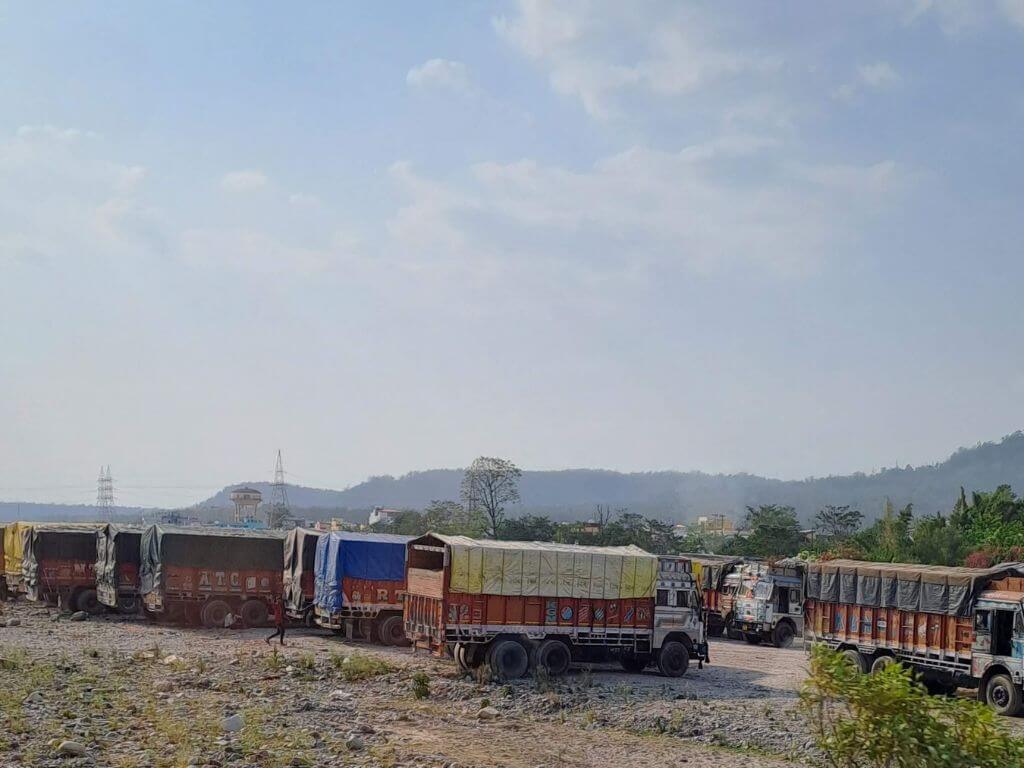
Photo: Ranjona Banerji
Tourism or ecology?
Becoming a capital has been a double whammy for Dehradun. Not only has the city grown in an unbridled and unsustainable way, but lost connections to the natural environment. Most development is aimed at attracting tourism and not at improving people’s quality of life. Locals have little say. The latest Master Plan, announced in 2023, bears witness to this. The plan was announced in such a manner as to limit citizen inputs, a mandatory requirement.
The upshot of the plan, however, appears to be to increase built-up area further, and reduce the green cover within the city, as well as use the forests and mountains around as part of the Doon environment. This is not just devious in its disingenuity, it cannot hold for the future. Already, Dehradun suffers from a severe change in weather patterns because of the urban heat island heat effect. Temperature tracking by various environmental groups over the past few years show how the figures are rising as trees are cut to make way for buildings.
The additional tragedy, where Dehradun suffers the most, is that the planned development is not for local residents. It is tourist-oriented. Sewage treatment is still largely privately done; for the most part open drains carry wastewater into river beds. Garbage collection is sporadic in city areas and marginal in the surrounding areas not covered by the municipality but are still feeder villages for the city. Dehradun lacks a proper public transport system. Instead, it has four-lane highways for tourists to reach the town faster and four-lane highways to help pilgrims to wash away their sins faster. The newest road into Dehradun has a flyover built on a riverbed. The mind boggles at the genius of such a plan.
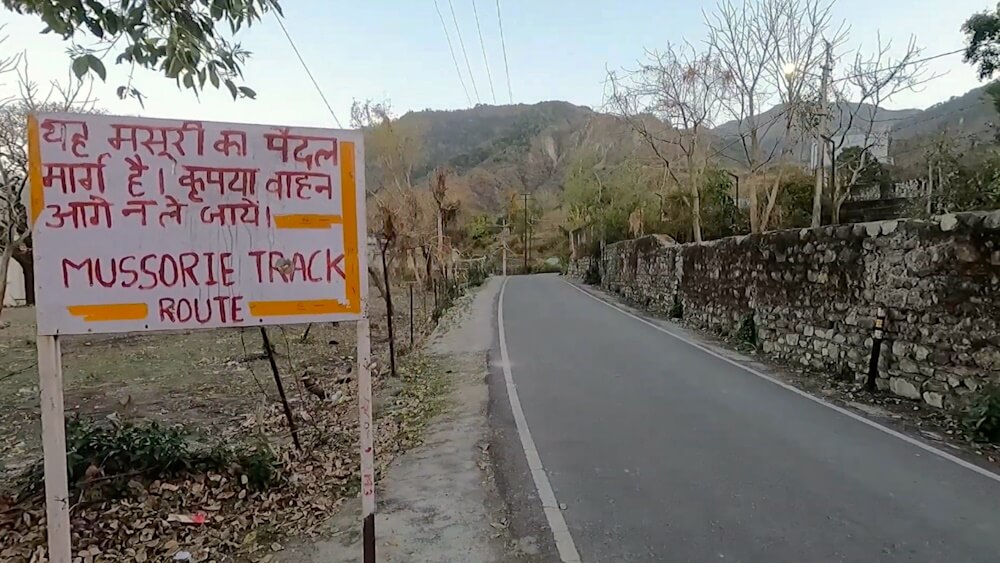
Photo: Daniel Romanson/ Wikimedia Commons
The irony is that tourists come to Dehradun for its lush greenery. Post-pandemic, there has been a massive influx mainly of people who wanted to escape to the hills, away from the pollution of the plains of North India. Unplanned growth fuelled by greed is, therefore, inconvenient for both visitors and residents.
Apart from a tourist hub, Dehradun is an educational and institutional hub. Premier schools and new universities dot the urban landscape and its environs. Some of India’s best public institutions are located here – the Survey of India, the Wildlife Institute, the Wadia Institute of Geology, the Forest Research Institute, and the Naval Hydrographic Office to name just a few. These institutions all have experts in topography, terrain, vulnerabilities and strengths of the area. An irony then that Dehradun should see growth that is not in keeping with its geology, ecology and more.
Uttarakhand is also home to the famed Chipko Movement, where women tied themselves to trees to stop forests from being cut. One of India’s most celebrated environmentalists of the past, Sunder Lal Bahuguna, and Vandana Shiva from the present are from here. Dehradun’s citizens stopped limestone quarries from destroying the Mussoorie hills. This summer too, when thousands took to the streets to save the city’s trees in brutal temperatures, the tradition continued.
And yet, as I drive through areas where once fields and orchards flourished but which now have only buildings, as I watch the mountains collapse under the strain of diggers and earthmovers, I know that the future is bleak. Seismologists predict that a massive earthquake is overdue, because the Indian landmass continues to push into the Asian plate. Every time I type “Dehradun”, my fingers fly faster than me to “Degradun”. A Freudian slip, perhaps.
Ranjona Banerji is an independent journalist who writes on the media, politics, gender issues and social trends. She has worked with a number of Indian journals since the mid-1980s, including Bombay Magazine, Mid-Day and DNA in Mumbai. She also worked with the Times of India in Gujarat in the early 2000s. About 10 years ago, she moved to the Himalayan town of Dehradun where she now watches mountains, birds and the hustle of Indian politics and media shenanigans.
Cover photo: Anand Singh/ Wikimedia Commons

